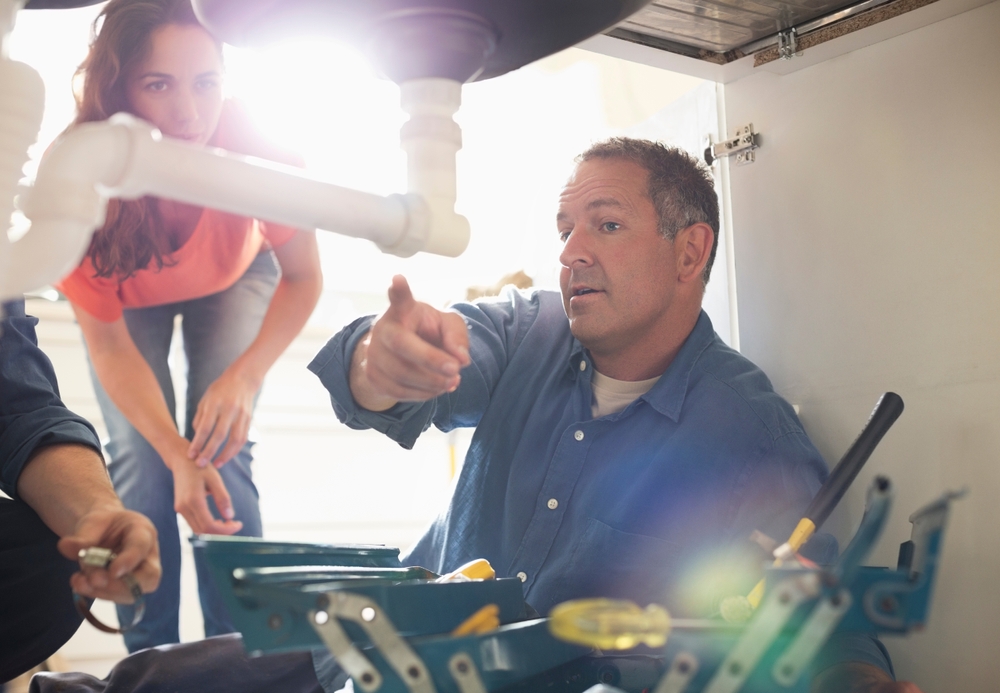
In the world of home plumbing, there are plenty of "handy" tips that get passed down from generation to generation. While some advice may seem helpful, a lot of it can do more harm than good. Here are 5 common plumbing myths that could be costing homeowners time, money, and peace of mind.
Myth #1: Putting a Brick in Your Toilet Tank Saves Water
Have you heard of the old brick trick?
Over the years some strange beliefs take hold. This old water-saving trick suggests that placing a brick in your toilet tank displaces water, leading to less water being used with each flush. While this may seem like a smart way to cut down on water usage, the reality is quite different.
Here’s the truth.
Putting a brick in the toilet tank can actually cause damage over time. The brick may disintegrate and clog the system, leading to inefficiencies or even costly repairs. In addition, the reduced water level may prevent the toilet from flushing waste completely, requiring multiple flushes and negating any water savings. Each time that waste doesn’t get flushed completely adds to the chance of a clog.
The facts about toilet flushes:
Toilets built before 1980 used 5–7 gallons of water per flush. Over time, we have found better mechanisms and water conservation tactics that make modern toilets more efficient. Now each flush uses as little as 1.6 gallons per flush.
Saving that much water per flush means that a properly functioning modern toilet can save up to 13,000 gallons of water per year for a family of four.
Replacing older toilets with modern low-flow models is far more effective than using makeshift solutions like a brick. A U.S. Environmental Protection Agency (EPA) WaterSense-certified toilet can save homeowners up to $140 annually in reduced water costs.
Myth #2: Lemon Peels are Good for Cleaning Garbage Disposals
Many people believe that throwing lemon peels into the garbage disposal helps to clean the blades and make the kitchen smell fresh. Unfortunately, while it might provide a temporary citrusy scent, lemon peels can cause long-term issues.
Here’s the truth.
Citrus peels, particularly from lemons, are fibrous and tough. Over time, they can damage the garbage disposal blades, clog drains, and reduce the overall efficiency of the system. They may also create blockages when their fibrous material gets stuck in the plumbing because citrus peels don’t dissolve quickly.
The facts about putting lemon peels in your garbage disposal:
Garbage disposals are a great addition to kitchens because they help eliminate so much of the food waste that causes methane levels in garbage dumps to rise. However, certain things cannot be stuffed down a garbage disposal, and citrus peels are one of them.
Since up to 70% of home plumbing issues originate in the kitchen, it’s important to know what to do and what not to do. One of the “don’ts” is putting citrus peels down your garbage disposal!
The best way to clean your garbage disposal is to use cold water and a small amount of dish soap. Grinding small ice cubes can also help remove debris from the blades without causing damage.
Myth #3: Running Hot Water While Using the Garbage Disposal Helps Everything Flow Smoothly
Another widely believed myth is that running hot water while using the garbage disposal helps grease and other waste flow easily through the pipes. The assumption is that hot water liquefies grease, helping it slide down the drain. However, this common misconception can lead to serious blockages.
Here’s the truth.
Hot water does indeed liquefy grease, but as it cools down further in the pipes, the grease solidifies, causing clogs. The more grease that builds up in the plumbing over time, the higher the risk of costly repairs and potential damage.
Do you know what causes 47% of all household plumbing blockages?
Improper disposal of grease and fats!
The facts about hot water and grease disposal:
The correct practice is to dispose of grease and fat in a container and throw it in the trash. (Some people even put it in the freezer to solidify before throwing it in the garbage.
Using cold water instead of hot when running the disposal helps solidify any residual grease so it can be chopped up and flushed through the system more effectively.
Myth #4: Chemical Drain Cleaners Are Safe for Your Pipes
Many homeowners reach for chemical drain cleaners as a quick solution to clogs. While these products are widely marketed as effective and might be effective for small clogs, they can do more harm than good, especially when used repeatedly.
Chemical drain cleaners rely on lye, aluminum, sodium nitrate, and bleach. All of these chemicals are toxic to humans and hard on pipes.
Here’s the truth.
Chemical drain cleaners contain harsh acids and chemicals that can corrode your pipes over time, leading to leaks and expensive repairs. They rely on lye, aluminum, sodium nitrate, and bleach. These chemicals are toxic to humans and hard on pipes.
The facts about chemical drain cleaners:
Studies show that frequent use of chemical drain cleaners can reduce the lifespan of pipes by 50%, especially if the pipes are older or made of PVC. According to the American Society of Plumbing Engineers (ASPE), using chemical drain cleaners repeatedly can also increase the risk of pipe bursts and contamination of water supply.
Re-piping your home is a costly, intensive process, so you don’t want to decrease the life of your pipes by eroding them with chemicals.
For small, infrequent clogs in your sink, there’s a better, all-natural, solution.
Can you really clean the drain with baking soda and vinegar?
Even better for long-range relief from drain clogs is calling ServiceOne for professional plumbing help. We use drain snakes, but also cameras and hydro jetting, which are effective and safe for the plumbing system.
Myth #5: A Slow Drip from a Faucet Isn’t a Big Deal
It’s easy to ignore a slow drip from a faucet, especially if it doesn’t seem to be causing any major issues. However, even a small leak can lead to big problems – and huge amounts of wasted water - if left unaddressed.
Here's the truth.
A dripping faucet wastes water and increases utility bills over time. In addition, it can be a sign of underlying plumbing issues, such as worn-out seals or loose connections, that will only worsen if not fixed promptly.
Here in Central Florida, we don’t have the issue with our water source diminishing like the people in the West have to cope with.
Even so, no one wants to waste water or spend money on water that’s just dripping out of a faucet no one is using.
The facts about slow drips:
It may look like a small drop of water, but a single dripping faucet can waste up to 3,000 gallons of water per year, enough to fill over 180 bathtubs.
Slow drips and small leaks are a common issue in our nation’s households. The EPA estimates that 10% of homes have leaks that waste 90 gallons or more per day!
Fixing leaks can save homeowners 10% on their water bills and help prevent water damage that could lead to expensive repairs. Drips are a big deal!
How ServiceOne Can Help:
These five common plumbing myths have been debunked. They are ideas passed down over the years that no longer have any basis in fact. These misconceptions can be costly! They lead to expensive repairs and even environmental harm. By staying informed and using proper plumbing practices, you can avoid these pitfalls and maintain a more efficient, cost-effective home.
ServiceOne’s plumbers know what’s right and what’s wrong when it comes to plumbing. We can solve any problem you have now. Our ClubOne plumbing maintenance agreement prevents future problems with an annual inspection.
Call us.

